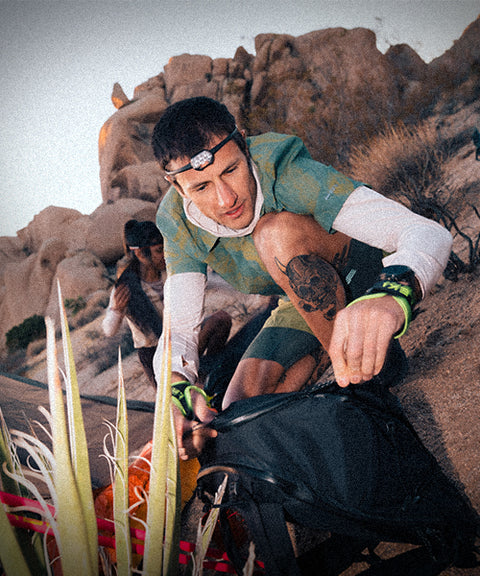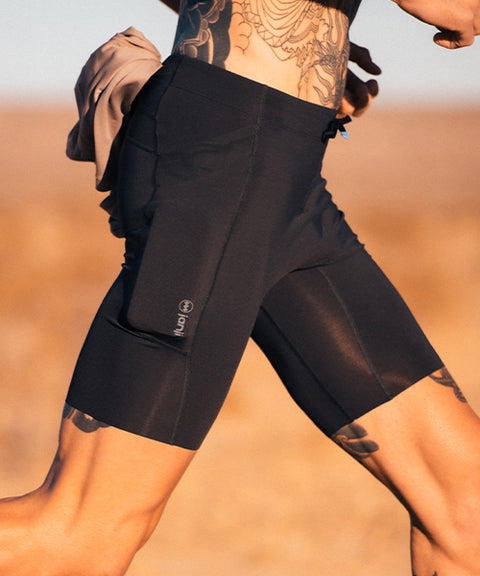Nick Butter
Running the Camino de Santiago
800km, 14 days, 40 degree heat.

What’s the Camino de Santiago?
The Camino de Santiago (the Way of St. James) is a large network of ancient pilgrim routes stretching across Europe and coming together at the tomb of St. James (Santiago in Spanish) in Santiago de Compostela in north west Spain.
The most popular route (which gets very crowded in mid-summer) is the Camino Francés which stretches 780 km (nearly 500 miles) from St. Jean-Pied-du-Port near Biarritz in France to Santiago. This route is fed by three major French routes: the Voie de Tours, the Voie de Vezelay, and the Voie du Puy. It is also joined along its route by the Camino Aragones (which is fed by the Voie d’Arles which crosses the Pyrenees at the Somport Pass), by the Camí de Sant Jaume from Montserrat near Barcelona, the Ruta de Tunel from Irun, the Camino Primitivo from Bilbao and Oviedo, and by the Camino de Levante from Valencia and Toledo.
The history of the Camino de Santiago goes back at the beginning of the 9th century (year 814) moment of the discovery of the tomb of the evangelical apostle of the Iberian Peninsula. Since this discovery, Santiago de Compostela becomes a peregrination point of the entire European continent.
The Way was defined then by the net of Roman routes that joined the neuralgic points of the Peninsula. The impressive human flow that from very soon went towards Galicia made quickly appear lots of hospitals, churches, monasteries, abbeys and towns around the route. During the 14th century the pilgrimage began to decay, fact brought by the wars, the epidemics and the natural catastrophes.
The recovery of the route begins at the end of the 19th century, but it is during the last quarter of the 20th century when the authentic contemporary resurge of the peregrination takes place. There is no doubt that the social, tourist, cultural or sport components have had a great importance in the “jacobea” revitalization but we cannot forget that the route has gained its prestige thanks to its spiritual value.


Who Am I?
I am a runner. That’s the simple answer. I’m best known for various world record setting missions such as becoming the first and only person to run a marathon in every country in the world. I did so running 3 marathons per week, in 3 different countries each week, over 674 days consecutively. At the time of writing I’ve run 993 marathons, with my all time mileage (including training and all events), totting up to just over 74,000 miles. I’ve competed in the Ultra Trail world tours on multiple occasions and have broken or set 11 world records.

Thanks to Penguin Publishers I write books about each of my mad running missions. These focus on the tales of the journey including the hardships and struggles, but also an overall philosophy of what running provides. The planet and it’s people are an exceptional combination.
The future: I intend to keep running of course. In the next few weeks i will complete my 1000th marathon, and begin my journey to 2000. My focus for the coming years (likely the rest of my life) is to continue coaching up and coming runners, build my retreat business, further my charity The 196 Foundation, and above all i have my heart set on running north to south of as many countries as possible. (Or circumnavigate if better suited to the countries geography). It’s my way of seeing the world, connecting with new people, and furthering my charitable endeavours.
In the coming months i will run north to south of New Zealand, Malawi and a circumnavigation of Bali and Iceland. Beyond this there’s a big mission pending. My biggest yet.
What was my experience of the Camino?
The moonlit mornings, clangs of cow bells sauntering through hillsides, cloud covered basins, and deep hues of the daily sunrise. The route, the landscape and the trail itself was everything i expected and so much more.The route is a spiritual journey for many. The tradition of taking stones or shells to carry your sins to Santiago and drop them off at the end. It’s famous for pilgrims finding meaning simply by walking. Although i set off without any intent to ‘find myself’ - it turns out i did. Unbeknownst to me when i started my mind was full of lifes admin tasks. Stresses of life had hazed my mind. Working behind a laptop more than running had led to a not perfectly happy me. The Camino, day by day cleansed these imperfections of spirit. So much so in fact that as the days clocked by I shed a few tears while running. I laughed and cried with new friends. When humans use their energy and have less sleep we aren’t too good at keeping our emotions in check.
Here though, all who embark on this journey welcomed these overwhelming feelings and let them wash over us. The shared footsteps, the shared suffering with blisters and searing heat wave, everyone i came across was of the same mind and heart. They were walking for their own reasons but collectively were supporting the levelling up of each fellow pilgrim. Imagine this 800km trail as a big ultra marathon. It has no marshals or timing chips or race intensity, but every few km there are water fountains, places to buy food, and to sleep. The principle difference is that there’s an air of nobody wanting the journey to end. Where as an ultra, everyone is rushing to the finish. This trail, everyone is prolonging the journey to absorb more positive energy from the landscape and friendly soulful people. There’s few places in the world like the Camino.


Practically speaking the route is sign posted and assisted with various apps for ease of navigation. Yellow arrows are painted on sign posts, Camino markings are left by passing pilgrims, arrows made of collected stones help even further. Of the 5 regions of Spain the route traverses across north Spain each showcases the Camino in their own way. Sometimes statues of the famous shell shapes, others offering extra foundations or subsidising food and board. Albergues, aka hostels are dotted every 5 or 10km along the route. Vending machines offer food, blister plasters and water. Locals shout Buen Camino to offer words of a good journey. The spirit of the Camino is real. From the infrastructure, the well maintained paths, to safety, shelter, hydration and shade, the Camino gets top marks.
What struck me so starkly besides the spiritually soulful element was the combination of scenery and beauty within the villages. Each little town with small church towers with raining bells, or the larger monasteries on hill sides, each village was kept untouched and yet also housed so many tourists. Locals live in this villages and don’t mind us traipsing through. Much the opposite of the welsh and campervaners i may add.
Walked, cycled, or run, this route is a must. The combination of landscape, hard grafting up and down steep hills, trudging through the desert section, the brilliant people, the collective energy of positive goodness, and the well provisioned villages and support stops make this an exceptional journey. Well done Spain. Well done.
Why Wear Janji?
For a runner or non runner, you want your clothes to fit properly, look good, and be comfortable. The only added musts for running gear is that they can’t chaff, and they can’t degrade, if for example, suncream breaks down the fabric, or bag straps rub on them. If you haven’t tried Janji gear you’ll be surprised how they managed an ideal balance.

I was given Janji gear as a gift by a friend a while ago. I don’t know why, but I’m very rarely impressed with run clothing. Maybe it’s because I’ve tried and tested more or less everything and it all tends to be rather similar. Janji gear though i was immediately impressed by. As a super long distance runner, and one that likes to keep my pack weight low their vest top and shorts i could scrunch up and hold in the palm of one hand. The material is very thin. This i was sure would be great for drying quickly and of course carrying. It was. I was a little hesitant about the durability and hence packed double of everything. I’m very used to being dirty during a run mission and so usually will just wear one outfit until I’m finished. Even on multi week projects. After 5 days, i sent my backup top and shorts home. The vest despite my bag and later my bumbag rubbing on the fabric, there was no degradation. Have Janji made the perfect running vest? I can’t fault it.
Janji provided me with a running jacket, a waterproof to be precise. This is the only item I’ve not yet tried. Mostly because a certain 40 day heatwave is currently sweeping Europe. I’ve not felt rain in 2 months. The rest of the gear which includes shorts, 2 types of quick drying t shirt, a vest and a cap are all exceptional. The cap I’ve actually had a number of friends comment on the lightness and comfort. I agree. I’ve leant the cap to friends during the trip in particularly hot sections so they don’t get heat stroke. All of them. ALL of them comments how light it is. For something you wear on your head this i take my hat off for! Something which I’m not a fan of when it comes to caps is the adjustments needed for it to fit properly. This cap just slides on a soft elastic meaning no need to faff with extra flapping bits hitting the back of your neck, nor is it every too tight or too loose.
I am wearing Janji gear still, the same tops with no wear and tear, and they wash and dry easily. I honestly can’t find a better running vest. I hope to be wearing their gear on future missions. Thank you Janji.










